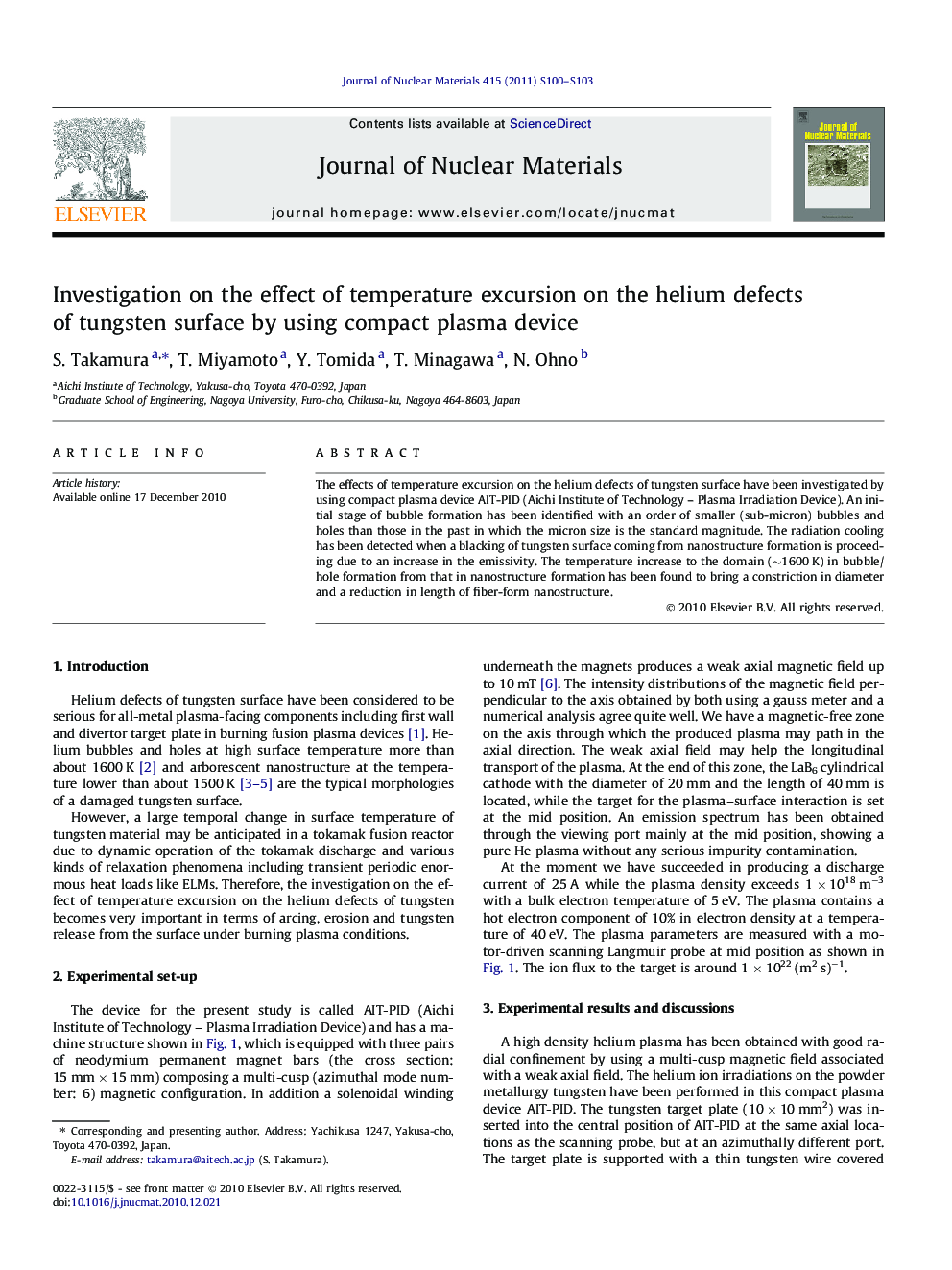| Article ID | Journal | Published Year | Pages | File Type |
|---|---|---|---|---|
| 10645061 | Journal of Nuclear Materials | 2011 | 4 Pages |
Abstract
The effects of temperature excursion on the helium defects of tungsten surface have been investigated by using compact plasma device AIT-PID (Aichi Institute of Technology - Plasma Irradiation Device). An initial stage of bubble formation has been identified with an order of smaller (sub-micron) bubbles and holes than those in the past in which the micron size is the standard magnitude. The radiation cooling has been detected when a blacking of tungsten surface coming from nanostructure formation is proceeding due to an increase in the emissivity. The temperature increase to the domain (â¼1600Â K) in bubble/hole formation from that in nanostructure formation has been found to bring a constriction in diameter and a reduction in length of fiber-form nanostructure.
Related Topics
Physical Sciences and Engineering
Energy
Nuclear Energy and Engineering
Authors
S. Takamura, T. Miyamoto, Y. Tomida, T. Minagawa, N. Ohno,
